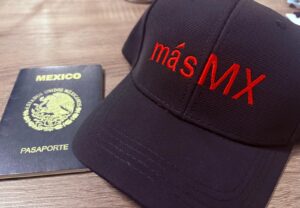The U.S. Department of Homeland Security (DHS) announces major changes
As an initial matter, please note that the new version of the Form I-9 will be published and made available for use on August 1, 2023. We recommend transitioning to the new version of the form at that time or shortly thereafter. The current version (with a revision date of 10/21/2019) will remain valid through October 31, 2023.
The new form includes several changes of which employers should be aware. Specifically, we wish to draw your attention to the following:
-
Sections 1 and 2 have been simplified and consolidated onto a single page;
-
The “Preparer/Translator Certification” section (used by any third-parties assisting with verification) has been moved to a separate, standalone supplement (Supplement A); AND
-
Section 3 (used for rehires and re-verification of returning foreign workers) has been eliminated and replaced by a separate, standalone supplement (Supplement B).
DHS shared additional details about the new form and its changes.
Physical document examination
Under current DHS regulations, all identity documents must be physically inspected by the employer at the time the Form I-9 is executed.
During the COVID-19 pandemic, the agency temporarily permitted remote inspection of documents for remote employees not physically present at the worksite. This limited flexibility is set to expire on July 31, 2023, and employers have 30 days to comply with the physical examination requirements after the COVID-19 flexibilities sunset at the end of the month.
In light of the temporary rule’s popularity and success, in August 2022 DHS issued a Notice of Proposed Rulemaking to expand the remote inspection flexibilities in certain circumstances. Concurrent with the updates to the Form I-9, DHS published its Final Rule on the topic outlining the criteria for remote document inspection. The Final Rule will be effective on August 1, 2023.
Here are the key takeaways:
-
Employers who do not participate in the E-Verify program must continue to comply with the physical examination requirements of the Form I-9. Remote document inspection is not permitted.
-
Employers who do participate in the E-Verify program may, as an alternative to physical examination, inspect the Form I-9 documents remotely. This is the case for both remote employees AND in-person employees. To qualify for this alternative, the employer or its third-party agent must:
-
Obtain photocopies of both sides of the Form I-9 documents, and examine such documents to determine that they reasonably appear to be genuine;
-
Conduct a live video interaction with the individual presenting the documents, and examine the same documents during the video interaction;
-
Indicate in Section 2 of the new Form I-9 that the alternative procedure was used for the document examination; AND
-
Retain a clear, legible copy of each side of each Form I-9 document presented. These copies must be made available during an I-9 audit.
The full Final Rule can be found on the DHS website.
Caution regarding onboarding software and services
Separate and apart from the foregoing DHS news, we wish to make you aware of several scams and non-compliant practices by certain vendors and service providers with respect to the Form I-9.
In recent years, we have seen numerous vendors offer “streamlined” onboarding software targeted at H-2A and H-2B employers. We have learned through clients and others in the industry, however, that many of the products and services falsely claim that remote document inspection is lawful, and on that basis have induced many of their clients to unknowingly violate federal law.
When evaluating any third-party onboarding software, you should conduct your due diligence and be mindful of the following:
-
Under current law, you must physically examine the employee’s actual Form I-9 documents. Examination of photos and electronic copies is NOT acceptable. Even under the new regulatory provisions, remote examination is only acceptable if ALL requirements (listed above) are met.
-
If the software or service provide completes any portion of the Form I-9 (i.e., pre-filling the employee’s information), the service provider must identify themselves as the “Preparer or Translator” and complete the applicable certification on the Form I-9.
-
If the software is used only for foreign H-2A and/or H-2B workers, you must ensure that you follow comparable protocols document retention protocols for your U.S. hires. It is considered national origin discrimination to make and store electronic copies of Form I-9 documents (as would be the case with onboarding software) for foreign workers but not U.S. workers.
If you become aware of any vendors that are non-compliant, you may report them directly to U.S. Immigration and Customs Enforcement (ICE).







